Gee’s Bend Quilts: African American Works of Early Modern Art
Photographs of Quilted by Katie Mae provided by Etsy. Originally printed in AphroChic magazine Issue 9, Summer 2022.
One of the potential hazards of loving art is the tendency to see it as something separate from everyday life — a thing apart, with no ability to function practically beyond what it stirs in us emotionally or intellectually. Sometimes that can be true, but often our most inspired works are the ones inspired by a practical need, like the patterned rugs of the Middle East and Central Asia. Similarly, the African American quilts of Gee’s Bend, hailed as pivotal works of modern art in museum exhibitions around the country, were inspired by the simple need to stay warm.
The small community of Gee’s Bend, located at an isolated bend in the Alabama River, about 50 miles south of Selma, began in 1816 as the cotton plantation of Joseph Gee. The plantation was later sold, along with its workforce of 47 enslaved laborers to a relative, Mark H. Pettway. Though the land would change hands repeatedly afterward, most of the current community’s inhabitants — the descendants of those enslaved on the original plantation, still bear the Pettway name.
The tradition of quilt making that developed in Gee’s Bend likely traces back to the earliest days of the plantation itself, drawing from a combination of African, Native American and original techniques. The quilts first came to national attention in the 1960s with the formation of the Freedom Quilting Bee. This collection of Gee’s Bend women gathered after auctions of the quilts in New York City attracted the attention of Vogue, Bloomingdales and eventually the Smithsonian. The collective was a way for women in the community to earn money and rally support for the voting drives of the Civil Rights Movement. In retaliation, the local government ceased ferry service to the community, effectively isolating it, save for a single country road. Undeterred, the collective continued to gain friends and connections and is credited with causing a resurgence of popularity for quilts in American interior design in the 1960s.
By the time the 21st century arrived, the Gee’s Bend quilts were firmly established as works of art. The first exhibition, The Quilts of Gee's Bend, was held at the Museum of Fine Arts Houston in 2002 before traveling across the country. In 2006, ferry service to the community was restored.
Gee’s Bend quilts come in a variety of styles, each of them a departure from the more structured traditions of Europe and European Americans. These styles can be generally categorized as abstract/improvisation; geometric; bricklayer; Sears corduroy; and workclothes. The abstract or improvised quilts are often considered the most emblematic of the tradition. Easily the most emotional of the styles, their aesthetic has often been compared to that of jazz improvisation for the free-form and energetic perspective they express.
The geometric quilts are dazzling works of art repeating simple shapes like triangles or rectangles in creative and unexpected patterns. This style was very popular among Gee’s Bend quilters in the early 20th century. Their bright, energetic displays are a striking contrast to what the community was experiencing through the Great Depression years.
Bricklayer quilts begin with a single piece of fabric, with strips of additional cloth woven in from the edges to frame the original pattern in the center. A longtime favorite within the community, the technique has been compared to the “Call and Response” tradition of African American music, as found in gospel and the Blues.
The corduroy and workclothes techniques speak to the very roots of the tradition. In the '70s, the Freedom Quilting Bee produced pillow cases for Sears. Scraps of the material provided inevitably found their way into their quilts. The works produced during this period are unique both for their color palette and being made of corduroy, considered an atypical fabric for quilting. Worn workclothes on the other hand, were the first and most enduring resource for Gee’s Bend quilters. The fabric, already beaten and worn from hard use in the fields, lent a hauntingly weathered feel to the quilts when strips of the material were laid out in abstract patterns — or in some cases, no pattern at all.
Gee’s Bend quilts can be displayed in the home in any number of ways. As works of art they can be hung on the walls or even framed to create a dramatic backdrop. But it’s just as fitting to put them to their original uses. They were made to keep families together and warm, and there’s no more practical or artistic reason to bring something into your home than that. However you choose to incorporate a Gee’s Bend quilt into your home decor, it’s important to do so in a way that recognizes the fraught history and long tradition that they emerge from and continue to represent, respecting them not just as folk art “from the margins,” but as modern art from the heart.














